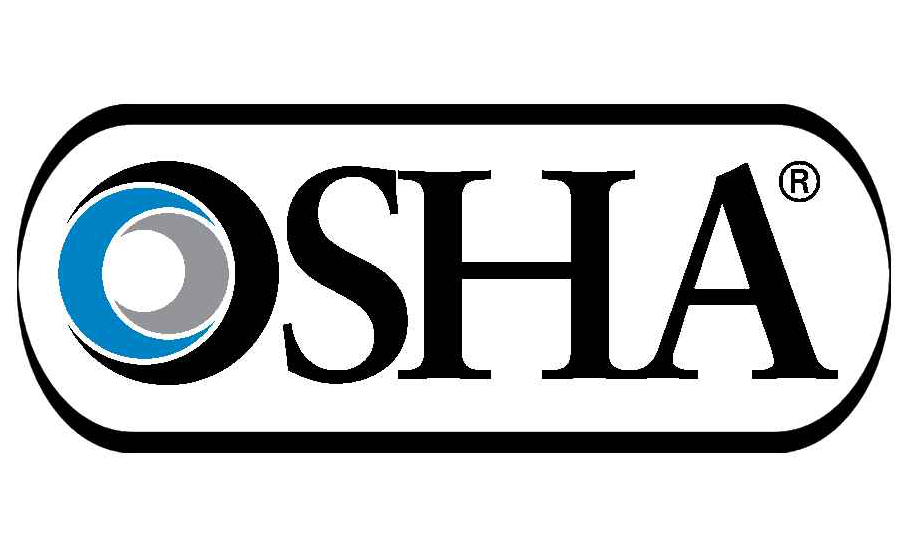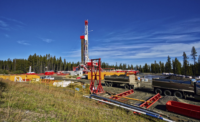This memorandum is intended to clarify OSHA's policy for citing the general industry standard for personal protective equipment (PPE), 29 CFR 1910.132(a), for the failure to provide and use flame-resistant clothing (FRC) in oil and gas well drilling, servicing, and production-related operations. For the purpose of this memo, FRC includes both flame-resistant and fire retardant treated clothing. Clarification of the need to provide and use FRC during certain drilling, servicing, and production-related operations is necessary to resolve its inconsistent use among drilling contractors, well servicing contractors, and oil and gas companies that employ thousands of workers in these operations.
OSHA inspection history and current information, including consensus standards, scientific evidence, and accident and injury data, indicate a potential for flash fires during certain well drilling, servicing, and production-related operations.
Where FRC is not being used by workers in these operations, a citation under 29 CFR 1910.132(a) requires evidence that the employer had actual notice of a need for protective equipment, or that a reasonable person familiar with the circumstances, such as facts unique to the industry, would have recognized a hazardous condition warranting the use of that equipment.
Flash Fire Hazards
While the oil and gas industry has worked to reduce the risk of flash fire incidents, these efforts have not eliminated the occurrence of flash fires, nor the resulting burn injuries and fatalities. The use of FRC greatly improves the chance of a worker surviving and regaining quality of life after a flash fire. FRC can significantly reduce both the extent and severity of burn injuries to the body.
A flash fire is a fire that spreads rapidly through a diffuse fuel, such as dust, gas, or the vapors of an ignitable liquid, without the production of damaging pressure. The intensity of a flash fire depends on the size of the gas or vapor cloud. Hydrocarbon (oil and gas) flash fires generate temperatures of 1,000 to 1,900 degrees Fahrenheit.
See NFPA 2112, National Fire Protection Association Standard on Flame-Resistant Garments for Protection of Industrial Personnel Against Flash Fire, 2007 Edition.
The duration of a flash fire can last up to five seconds.
NFPA 2112 and NFPA 2113 (Standard on Selection, Care, Use, and Maintenance of Flame-Resistant Garments for Protection of Industrial Personnel Against Flash Fire, 2007 Edition) apply to general industry workplaces, including drilling, well servicing, and production-related operations.
Inherent flash fire hazards are associated with oil and gas well drilling, servicing, and production-related operations. Additionally, the industry has a history of burn-related injuries and fatalities due to flash fire hazards when engineering and administrative controls have failed. Therefore, OSHA has concluded that employers are required to provide and ensure the use of FRC during certain operations as discussed below.
A flash fire requires oxygen, an ignition source, and a fuel source such as hydrocarbon or an atmosphere containing combustible, finely divided particles with a concentration greater than the lower explosive limit of the chemical. See NFPA 2113, Annex A.
Ignition sources are present in drilling, well servicing, and production-related operations in several forms, including but not limited to: electrical systems, handheld electrical tools, motors, generators, hot work activities, and static electricity. Exposure to flash fires can result in devastating burns and death -- 16% of fatalities in the oilfields result from fire and explosions. Curlee, Broulliard, Marshall, Knode, and Smith, Upstream Onshore Oil and Gas Fatalities: A Review of OSHA's Database and Strategic Direction for Reducing Fatal Incidents, Society of Petroleum Engineers, March 9, 2005, at 2.
Potential of Flash Fires Occurring During Oil and Gas Drilling. Well Servicing, and Production - Related Operations
There is a lower potential for flash fires during rig-up operations and during drilling operations that have not reached gas and hydrocarbon-producing zones. The potential for flash fires increases when the drilling process hits formations or zones of hydrocarbons and gas. Potential exposures to flash fires occur when drilling accesses an active gas or hydrocarbon zone, because the pressure from underground gas or hydrocarbon could "kick" the well fluids up the hole to the drilling rig floor or platform. If this kick is not contained or controlled by the blowout preventers (BOP) or rig engineering controls, there is a high potential of flash fire due to the presence of ignition sources on or in the vicinity of the drilling platform.
Servicing operations on oil or gas wells that are active or in production involve the accessing and extraction of oil and gas, and also present a potential for flash fires. Servicing operations also include work on inactive wells, such as stimulating, plugging, or capping.
Production-related operations presenting potential for flash fires require the use of FRC. These operations bring the well fluids to the surface, separate, store, gauge, and otherwise prepare the product for delivery. This phase occurs after a well has been drilled, completed, and placed into operation, or after it has been returned to operation following workover or servicing.
Each of these types of operations typically uses both engineering and administrative controls to control the wells. Engineering and administrative controls serve to reduce but do not eliminate the potential for flash fires occurring during drilling, well servicing, and production-related operations. Flammable liquids or gas could be released and migrate to ignition sources because of an inadequacy or failure in these engineering and administrative controls.
Examples of inadequacies/failures of engineering controls include BOP malfunction, hydraulic failure, gauge or indicator equipment error or malfunction, power disruption, and valve failure. Engineering controls are subject to failure due to inadequate design, installation, inspection, testing, and maintenance. Administrative control failures include deviation from standard operating procedures, failure to close valves, failure to activate the emergency shutdown system, and failure to activate the BOP. Administrative controls are subject to failure when procedures have not been adequately developed, implemented, audited, and enforced.
Citation Guidance for 29 CFR 1910.132(a)
Where appropriate, CSHOs shall cite 29 CFR 1910.132(a) for the failure to provide and ensure the use of FRC in oil and gas drilling, well servicing, or production-related operations when there is a potential for flash fire hazards as discussed below.
FRC is usually not needed during initial rig up and normal drilling operations prior to reaching active hydrocarbon zones, unless other activities warrant their use; e.g., fracing a previously drilled well while rigging a well in close proximity.
A potential for flash fire exists once active gas or hydrocarbon zones are reached. Appropriate FRC shall be worn by exposed employees working on the well site prior to drilling into identified gas or hydrocarbon zones. CSHOs should verify that employees are wearing FRC in advance of reaching such zones.
Appropriate FRC should also be worn when there is a history of fluid or gas kicks from underground producing zones.
Once FRC is identified for use as provided above, employees should wear appropriate FRC until the final casing is cemented and the well is effectively closed.
Well Servicing Operations
CSHOs shall determine whether FRC is provided and worn during well servicing or workover operations, such as:
Pulling wet string tubing
Snubbing tubing
Swabbing operations
Fracturing or perforating the well
Using bridge plugs or packers
Open hole work
Flow testing, blowing down or venting the well
Plugging an abandoned well
Flowback operations
Cementing
Stimulation
Wireline operations
Any operation working with wellhead or wellbore under pressure
Production-Related Operations
In OSHA's experience, the potential for flash fire also exists in production-related operations that fall outside of drilling and well servicing. CSHOs shall determine whether FRC is provided and worn during production-related operations, such as:
Equipment openings (e.g., line breaking or valve changes)
Gauging
Transfer of hydrocarbons
Maintenance operations on production equipment
Hot work operations
Tank heating
Using open flame
Start-up operations
The following sample language is provided for citations proposed under 29 CFR 1910.132(a):
"The employer failed to provide and ensure the use of flame- retardant treated clothing (FRC) necessary to protect employees from burns due to potential flash fires."
Citation Guidance for Other PPE Provisions
Other provisions of the PPE standard may also apply to drilling, well servicing, and production-related operations.
CSHOs shall cite 29 CFR 1910.132(b) where there is a failure to assure that employee-owned FRC is properly maintained and sanitary.
CSHOs shall cite 29 CFR 1910.132(c) where the employer fails to provide FRC that is of safe design and construction for work being performed. Employers may consult consensus standards such as NFPA 2112 and 2113 to comply.
CSHOs shall cite 29 CFR 1910.132(d) where the employer fails to conduct a hazard assessment to identify the potential for burn hazards where employees have occupational exposure(s) to flash fires. Please review 29 CFR 1910.132(g) for appropriate application. At the time of this memo, a comprehensive personal protective equipment enforcement directive is being developed that will provide further citation guidance on this issue.
CSHOs shall cite 29 CFR 1910.132(e) when defective or damaged FRC is used.
CSHOs shall cite 29 CFR 1910.132(h) when an employer fails to provide, at no cost to employees, FRC that is used to comply with the standard.




